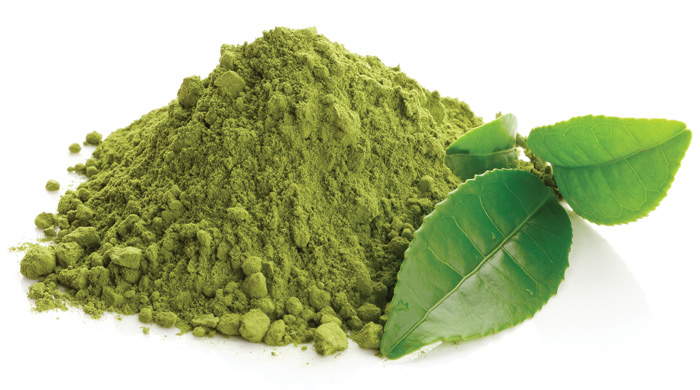Consumers Seek Sustainable Energy
Nutraceuticals | APPLIED SCIENCE
2021 saw increases in home gym and fitness equipment purchases as people made resolutions to get fit—but in the safety of their homes, thanks to COVID. 2022 is looking a bit different. People have the same, if not greater, resolve to exercise and be more active, but no longer just at home. Gyms have seen a resurgence of new members as people return to active lifestyles out in the world again.
Inside or outside, exercise, recreation, and socialization are priorities for many of us. People want the energy to stay active and motivated. While most energy bars focus on carbohydrates for energy sources, caffeine is the main energy-delivery ingredient in beverages. Both products, however, have evolved to meet changing trends, particularly the plant-based and clean eating trends.
Today’s energy bars use ingredients like whole grains, nuts, seeds, and dried fruits for natural sources of energy. KIND Energy Bars, for example, offer sustained energy from 100% whole grains (oats, quinoa, buckwheat, amaranth, and millet).
Popular energy drink brands Red Bull, Monster Energy, and Rockstar utilize caffeine in their formulations. But as consumers look for plant-based and “clean” energy ingredients, such beverages are evolving and calling out their natural sources of caffeine and other consumer-friendly ingredients.
Natural Caffeine
Last year the International Society of Sports Nutrition (ISSN) published its position on caffeine intake and exercise performance (Guest et al. 2021). ISSN stated that caffeine has consistently been shown to improve exercise performance when consumed in doses of 3–6 mg/kg body mass, and caffeine appears to improve physical performance in both trained and untrained individuals. The organization also stated that energy drinks and pre-workout supplements containing caffeine have been shown to enhance both anaerobic and aerobic performance.
A systematic review by Jimenez et al. (2021) also confirmed caffeinated drinks’ influence on physical performance in sports categories such as endurance, power-based sports, team sports, and skill-based sports. A total of 37 studies published from 2000 to 2020 were included in the review. The analysis revealed that both sports drinks with caffeine and energy drinks were effective in increasing several aspects of sports performance when the amount of drink provided at least 3 mg of caffeine per kg of body mass. Researchers also found that due to their composition, caffeinated sports drinks seemed to be more beneficial to consume during long-duration exercise as exercisers turn to them for both rehydration and caffeine supplementation.
Messaging related to caffeine—a top ingredient in energy beverages for athletes as well as active consumers—often now focuses on its source. Newer energy drink introductions use phrases like clean energy, natural energy, healthy energy, or fueled by plants to refer to their plant-based or natural sources of caffeine.
- Green coffee bean extract comes from unroasted coffee beans. Green coffee beans contain caffeine, but less than regular coffee. One cup of green coffee contains approximately 20 mg of caffeine, whereas, on average, one cup of regular coffee contains about 95 mg of caffeine. Green coffee beans also contain chlorogenic acid, which has been shown to have antioxidant and anti-inflammatory properties.
Zoa Energy Drink, which was introduced last year, utilizes green unroasted coffee beans as well as green tea to offer 150 mg of “clean caffeine” for the “everyday warrior.”
- Guarana, a botanical, boasts a high concentration of caffeine. It may contain up to 3.6%–5.8% caffeine by weight while coffee has up to 2%.
Celsius Energy Drinks utilize guarana seed extract, which the company says contains more than twice the amount of caffeine as an average coffee bean. The company states that Celsius powers active lives every day with essential, functional energy.
- Green tea extract contains caffeine, but not as much as coffee. Depending on the extract, it can contain approximately 20 mg of caffeine. Because it can contain antioxidants like catechins, green tea extract is used in energy beverages not only for its caffeine content, but also for its healthy halo.
- Yerba mate is an herb tea that contains from 70 mg to 85 mg of caffeine per cup—more than green tea.
- Guayusa is a botanical source of caffeine that can be found in beverages like RUNA, which is brewed with organic guayusa tea. RUNA’s healthy energy drinks contain up to 150 mg of caffeine in one 12 oz can. Like green tea extract, guayusa also boasts antioxidant properties.
B Vitamins
While calling out plant-based sources of caffeine is trending in energy beverages, B vitamins are one of the mainstay ingredients in these drinks. In fact, it’s rare that one doesn’t find B vitamins in an energy beverage ingredient list. Although they don’t provide caffeine, they are familiar ingredients to consumers. Their use in energy drinks is related to the fact that B vitamins are essential for energy production in the body.
Recently, Jagim et al. (2022) examined the Nutrition Facts panels of the top 75 commercially available energy drinks and shots in the United States to characterize common ingredient profiles. Researchers said their findings suggested a high prevalence of caffeine and B vitamins in energy products, with many of the formulations containing well above the recommended daily value of B vitamins. The top ingredients (based on prevalence and average amount) were caffeine, followed by vitamin B6, vitamin B3, vitamin B12, vitamin B5, and taurine.
Sugar and Other Carbs
One of the main concerns with energy drinks is that some contain high levels of sugar. While sugar provides a source of energy, many consumers are trying to reduce the amount of sugar in their diet. To meet this demand, natural, non-nutritive sweeteners like stevia, monk fruit, and sugar alcohols (xylitol, erythritol) are increasingly used in energy drinks. Other carbohydrates, like ribose and isomaltulose, for example, can also be used for sustainable sources of energy while helping to reduce sugar content.
- Isomaltulose is a functional carbohydrate composed of glucose and fructose, providing 4 kcal/g. Because of its unique glucose-fructose bond, it is digested slowly, resulting in a sustained glucose release. When isomaltulose, which is sold under the trade name Palatinose (BENEO), is used, the blood glucose peak is lower and the blood glucose curve is stretched. As result, the body is supplied with fuel for a longer period.
Palatinose is based purely on sucrose from sugar beet. It is generated through enzymatic rearrangement of the glycosidic bond between glucose and fructose from an alpha-1.2 linkage in sucrose to an alpha-1.6 glycosidic bond in Palatinose. The new molecular linkage is more stable compared with that of sucrose. It has a low glycemic profile, is approximately half as sweet as sucrose, and can replace sucrose on a 1:1 scale.
- Ribose is a five-carbon carbohydrate that is the backbone of adenosine triphosphate (ATP), the source for all cellular energy. Ribose drives the process that replenishes ATP and other energy components in cells. Bioenergy Ribose (Bioenergy Life Science) works by regulating the body’s natural energy synthesis. Not only has it been shown to restore and sustain energy for athletes and weekend warriors, but it is also believed to reduce muscle stiffness and soreness and support cardiovascular health. The company says it is well suited for anyone who wants more sustainable energy from the cellular level. In addition, using Bioenergy Ribose can help reduce the amount of sugar in product formulations by 10%.
There’s no doubt that energy drinks fulfill needs for athletic as well as generally active lifestyles. Using ingredients that cater to evolving consumer trends will help bring about success for product developers.
Learning Objectives
1. Understand growing consumer interest in energy drinks with low or no sugar and label-friendly ingredients.
2. List plant-based sources of caffeine that can be used in energy beverages.
3. Recognize that B vitamins are widely known ingredients in energy drinks.






